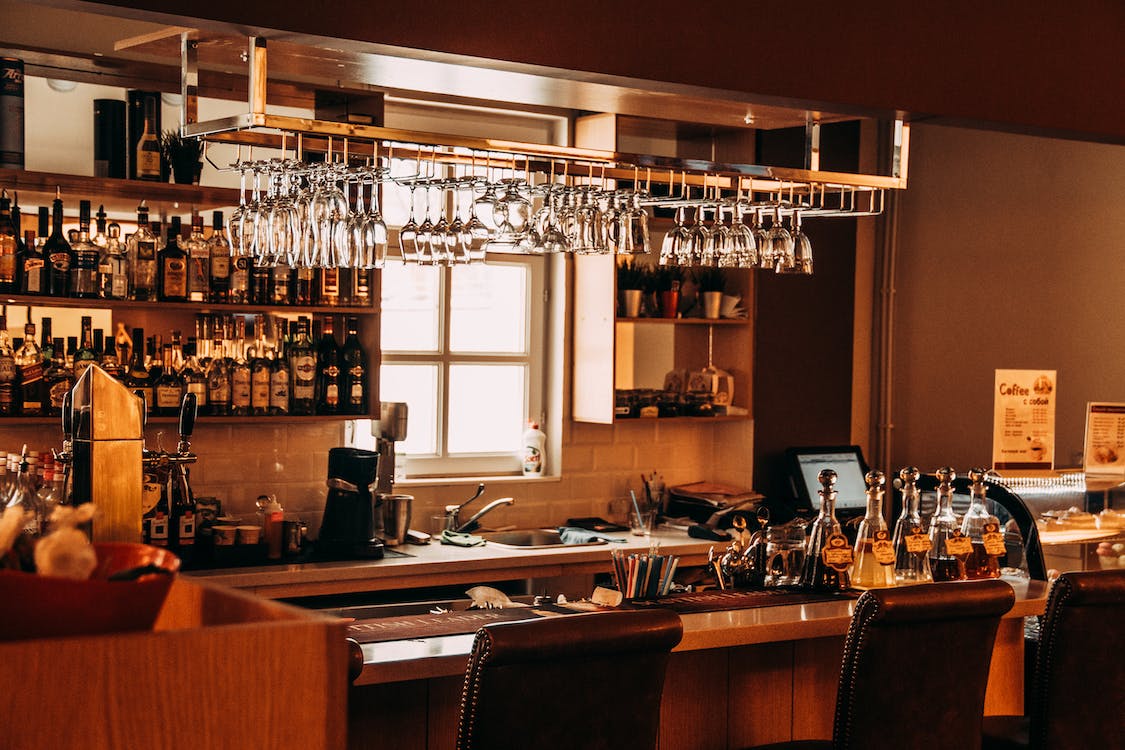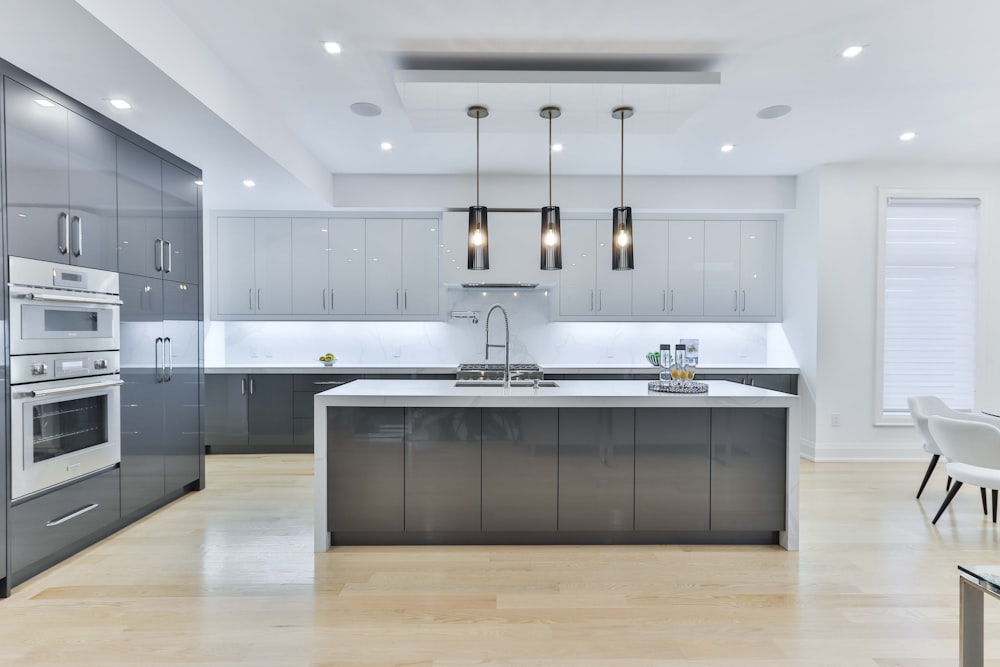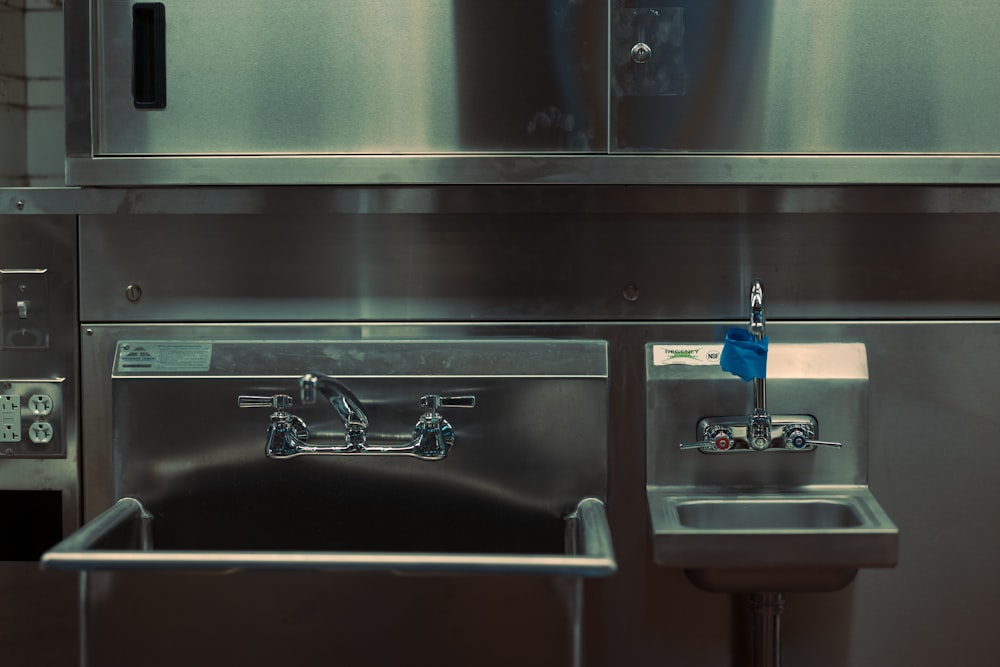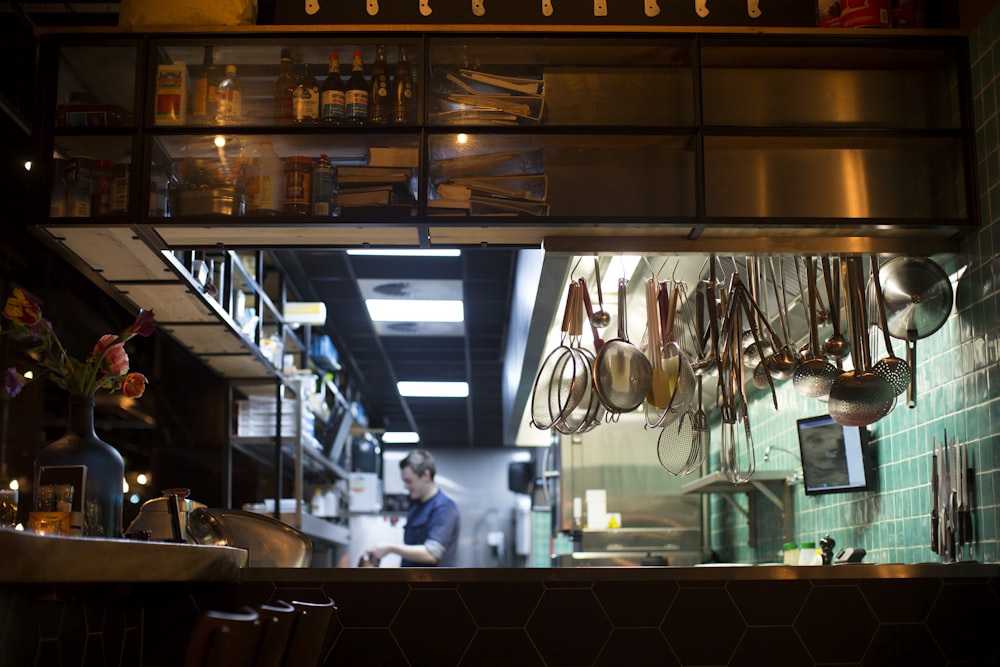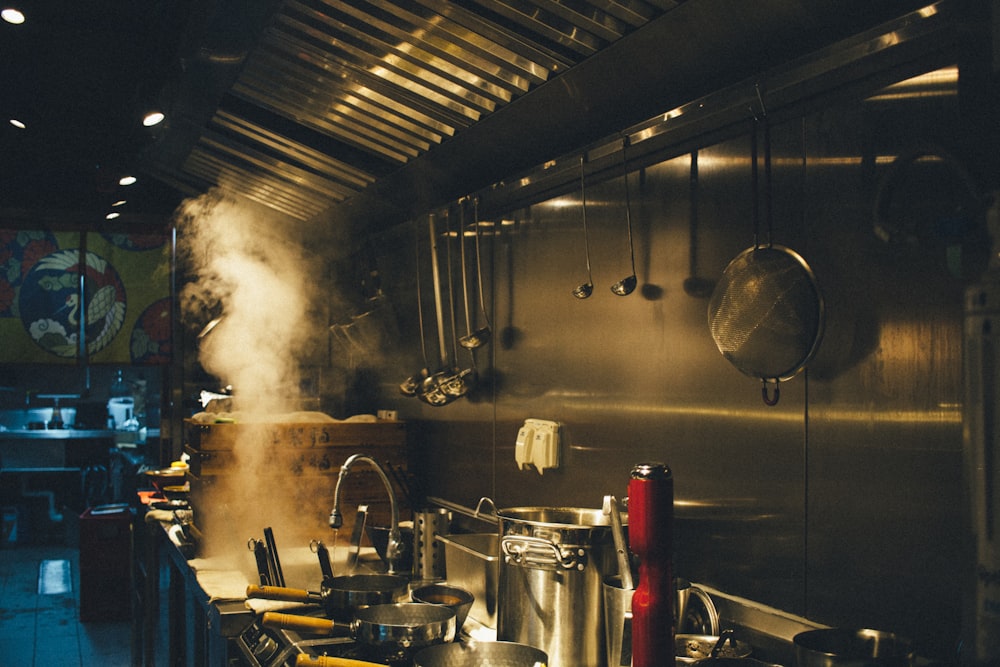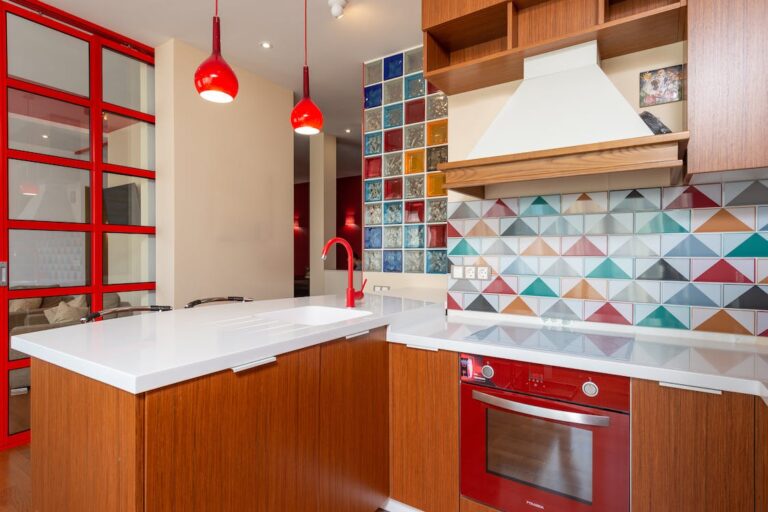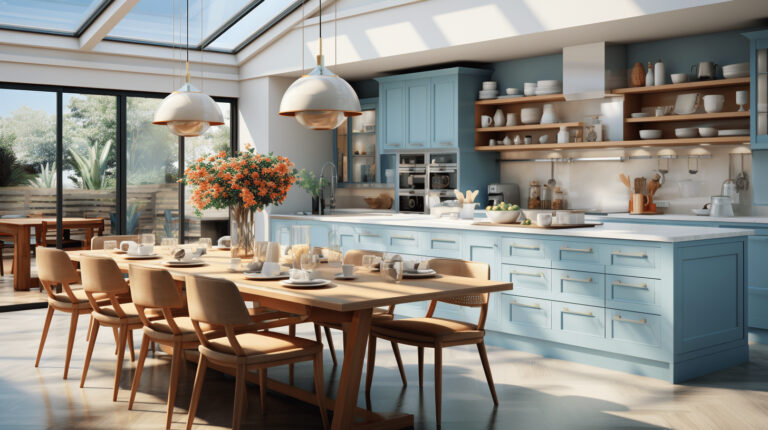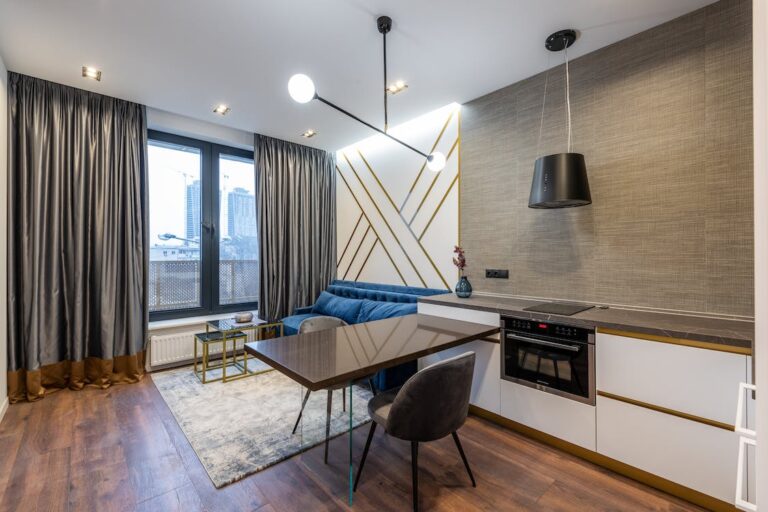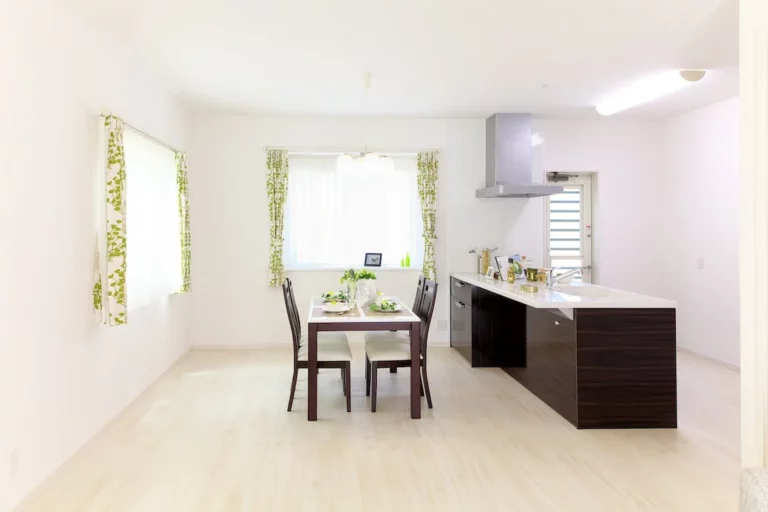The Art of Mixing Metals in Your Kitchen Design in 2023
Have you ever walked into a kitchen and been captivated by the design? Do you wonder what makes certain kitchens feel so elegant and sophisticated? One of the secrets lies in the art of mixing metals. By incorporating different metal finishes into your kitchen, you can create a visually stunning space that exudes style and glamour.
Table of Contents
- 1 The Art of Mixing Metals in Your Kitchen Design
- 2 The Rise of Mixed Metal Trend in Kitchens
- 3 Choosing a Dominant Metal
- 4 The Art of Mixing: Color and Finish Considerations
- 5 Guidelines for Mixing Metals
- 6 The Impact of Mixed Metals on the Kitchen
- 7 Additional Considerations for Mixing Metals
- 8 Conclusion
- 9 Frequently Asked Questions
The Art of Mixing Metals in Your Kitchen Design
In this article “The Art of Mixing Metals in Your Kitchen Design in 2023”, we will explore the rising trend of mixing metals in kitchen design. We will delve into the different considerations and guidelines to help you achieve a cohesive and eye-catching look. Whether you prefer a modern, industrial, or traditional kitchen style, mixing metals can add depth and interest to your space.
So, if you’re ready to take your kitchen design to the next level, let’s dive into the world of mixed metals and discover the possibilities they hold.
The Rise of Mixed Metal Trend in Kitchens
In the world of kitchen design, there’s a new trend that is taking center stage: the mixed metal trend. This design style involves incorporating different metals into the kitchen space, creating a unique and visually striking look. From sleek stainless steel to warm copper, mixing metals adds depth, interest, and sophistication to any kitchen.
So, what exactly is the mixed metal trend?
In simple terms, it’s the art of blending various metal finishes and colors to create a cohesive and eye-catching design. This trend is all about breaking the traditional rules of matching metals and embracing the beauty of contrast and variety in your kitchen space. By combining metals like brass, bronze, chrome, and iron, you can achieve a modern and eclectic look that is sure to impress.
Why is the mixed metal trend gaining popularity?
There are a few reasons why this trend has gained traction in the world of kitchen design. First, it offers a refreshing alternative to the monochromatic and matchy-matchy look of all stainless steel or all brass kitchens. Mixing metals allows for more creativity and personalization, allowing homeowners to showcase their unique style. Second, it adds visual interest and dimension to the space, making it more visually appealing. Lastly, it can be a cost-effective way to update your kitchen without the need for a full-scale renovation.
Choosing a Dominant Metal
When it comes to mixing metals in your kitchen design, it’s important to choose a dominant metal as the foundation for your overall look. The dominant metal will set the tone and serve as the main focal point in your kitchen. Here are some tips to help you choose the perfect dominant metal:
- Consider the style of your kitchen: The dominant metal should complement the overall style of your kitchen. For example, if you have a modern kitchen with sleek lines and minimalist design, a stainless steel or brushed nickel finish would be a great choice. On the other hand, if you have a rustic or farmhouse-style kitchen, a copper or bronze finish would add warmth and charm.
- Think about durability: The dominant metal in your kitchen will likely be exposed to daily wear and tear, so it’s important to choose a metal that is durable and easy to maintain. Stainless steel, for example, is known for its durability and resistance to stains and corrosion. If you prefer a more luxurious look, brass or gold-toned metals can add a touch of elegance to your kitchen.
- Consider the color scheme: Take into account the color scheme of your kitchen when choosing a dominant metal. Metals like stainless steel and chrome have a silver tone, which pairs well with cool color schemes and white or gray cabinets. If you have warm-toned cabinets or a warmer color palette, consider brass or gold-toned metals for a cohesive look.
- Think about the finishes: The finish of the metal can also play a role in its dominance in the kitchen. A polished or shiny finish will draw more attention and make the metal stand out, while a brushed or matte finish will have a more subdued look. Consider the overall aesthetic you want to achieve and choose a finish that complements your kitchen design.
Remember, the dominant metal doesn’t have to be present in every element of your kitchen design. It can be featured in prominent fixtures like faucets, cabinet handles, or lighting fixtures, while other metals can be incorporated in smaller accents or appliances. The goal is to create a cohesive and visually appealing look that reflects your personal style and enhances the overall design of your kitchen.
By choosing a dominant metal that aligns with your kitchen style and considering factors like durability, color scheme, and finishes, you can create a stunning mixed metal look that will transform your kitchen space.
The Art of Mixing: Color and Finish Considerations
When it comes to mixing metals in your kitchen design, choosing the right colors and finishes can make all the difference. The color and finish of the metals you choose can greatly impact the overall aesthetic of your kitchen. Here are some considerations to keep in mind when mixing metals:
Consider the Color Palette
- Start by considering the color palette of your kitchen. Are you going for a warm and inviting vibe, or a sleek and modern look? The colors of your metals should complement the overall color scheme.
- Bold and Contrasting: If you want to make a statement, consider mixing metals with contrasting colors. For example, pairing brushed brass with matte black can create a bold and dramatic effect.
- Tonal and Harmonious: On the other hand, if you prefer a more cohesive look, opt for metals with similar tones and finishes. Mixing different shades of bronze or copper can create a warm and inviting atmosphere.
Pay Attention to Finishes
- Another important factor to consider is the finish of your metals. The finish can greatly affect the overall look and feel of your kitchen.
- Shiny and Polished: If you want to create a glamorous and luxurious look, choose metals with a shiny and polished finish, such as chrome or stainless steel.
- Textured and Matte: For a more rustic or industrial vibe, opt for metals with a textured or matte finish, like brushed nickel or wrought iron.
- Mixing Finishes: Don’t be afraid to mix different finishes within your chosen metals. Combining glossy and matte finishes can add depth and visual interest to your kitchen design.
Balance and Proportion
- When mixing metals, it’s important to consider the balance and proportion of each metal in the space.
- Dominant Metal: Start by choosing a dominant metal that will be the focal point of your design. This metal will be used in larger fixtures or appliances.
- Secondary Metals: Once you’ve chosen your dominant metal, select one or two secondary metals to complement it. These secondary metals can be used in smaller accessories or hardware.
- Proportions: Make sure to balance the proportions of each metal throughout the kitchen. A good rule of thumb is to use the dominant metal in about 60% of the space, and the secondary metals in the remaining 40%.
Experiment and Have Fun
- Mixing metals in your kitchen design is all about experimenting and having fun with different combinations. There are no hard and fast rules, so feel free to get creative and try out new things.
- Create Mood Boards: Before committing to a specific combination, create mood boards or gather inspiration to visualize how different metals will look together.
- Test it Out: If you’re unsure about a certain metal combination, try it out in a small area before committing to it. Place samples of the metals next to each other to see how they interact and complement each other.
- Ask for Advice: Don’t be afraid to seek advice from design professionals or friends with a good eye for aesthetics. Sometimes an outside perspective can provide valuable insights and suggestions.
Mixing metals in your kitchen design can elevate the overall style and create a unique and personalized look. Remember to consider the color palette, finishes, balance, and proportion in order to achieve the desired effect. So go ahead, mix it up, and have fun creating your dream kitchen!
Also read: Design Tips for Open-Concept Kitchens : Creating a Welcoming Atmosphere in 2023
Guidelines for Mixing Metals
When it comes to mixing metals in your kitchen design, there are a few guidelines to keep in mind. Following these guidelines will help you achieve a cohesive and stunning look in your kitchen:
- Stick to Two or Three Different Metals: Mixing too many metals can create a cluttered and chaotic look. Limiting yourself to two or three different metals will give your kitchen design a sense of harmony and balance.
- Considerations Based on Kitchen Style: The style of your kitchen should guide your choice of metal finishes. For example, if you have a modern or contemporary kitchen, you might opt for sleek and polished metals like stainless steel or chrome. On the other hand, if you have a rustic or farmhouse-style kitchen, you might choose metals with a more aged and weathered appearance, like copper or bronze.
- Size and Scale of Metal Finishes: Consider the size and scale of your metal finishes when mixing metals. Pair larger, more prominent metal finishes with smaller ones to create visual interest and balance. For example, you might have a large stainless steel refrigerator paired with smaller brass drawer pulls.
- Creating a Cohesive Look: While it’s important to mix metals to add visual interest, it’s also crucial to create a cohesive look. One way to achieve this is by using metals with similar undertones. For example, if you choose a brushed nickel faucet, consider pairing it with stainless steel appliances that have a similar cool tone.
Remember, these guidelines are not set in stone. Mixing metals in your kitchen design allows for creativity and personalization. Feel free to experiment and find the combinations that work best for your style and taste.
As interior designer Jody Frazier puts it, “The mixed metal trend allows you to create a kitchen that feels unique and curated. It’s about finding the right balance and harmony between different metal finishes to create a visually stunning space.” So don’t be afraid to think outside the box and have fun with mixing metals in your kitchen design.
The Impact of Mixed Metals on the Kitchen
Adding Personality and Style to the Kitchen
One of the most exciting aspects of incorporating mixed metals into your kitchen design is the opportunity to add personality and style to the space. By combining different metal finishes, you can create a unique and visually striking look that sets your kitchen apart from the rest. Here are a few ways mixed metals can make an impact:
- Contrast and Depth: Mixing metals allows you to add contrast and depth to your kitchen. For example, pairing sleek stainless steel appliances with warm copper accents can create a visually dynamic space that is both modern and inviting.
- Visual Interest: When you incorporate mixed metals into your kitchen, you introduce an element of visual interest. The combination of different finishes and colors creates a visually stimulating environment that captures attention and adds a sense of sophistication to the space.
- Flexibility: Using mixed metals in your kitchen design gives you the flexibility to play with different styles and aesthetics. Whether you prefer a sleek and modern look or a more rustic and industrial vibe, mixing metals allows you to achieve the desired effect.
- Expression of Personality: Your kitchen is a reflection of your unique personality and style. Incorporating mixed metals allows you to express yourself and showcase your individuality. Whether you opt for a bold combination of brushed brass and matte black or a more subtle blend of chrome and rose gold, the choice of metals is an opportunity to infuse your kitchen with your personal taste.
- Timelessness: Mixing metals in your kitchen design can also contribute to creating a timeless look. While trends come and go, a carefully curated blend of metals can stand the test of time and maintain its appeal for years to come.
With the right combination of metals, you can transform your kitchen into a space that is not only functional but also visually stunning. So don’t be afraid to experiment and get creative with mixing metals in your kitchen design!
“Mixing metals allows you to add contrast and depth to your kitchen, creating a visually dynamic space that captures attention and adds a sense of sophistication.”
Additional Considerations for Mixing Metals
When it comes to mixing metals in your kitchen design, there are a few additional considerations you should keep in mind. These factors can greatly influence the overall aesthetic and cohesiveness of your space. Let’s take a look at some important considerations:
Wall Color
The color of your kitchen walls can play a significant role in how well different metal finishes work together. Lighter wall colors tend to create a more neutral backdrop, allowing the metals to take center stage. On the other hand, darker or bold-colored walls can provide a contrasting backdrop that enhances the impact of the mixed metals.
Countertop Color
The color of your kitchen countertops is another important consideration. If you have countertops with a dominant metal finish, it’s important to select complementary or coordinating metals for your fixtures and hardware. This will help create a cohesive look and avoid clashes between different metal finishes.
Kitchen Size
The size of your kitchen can also influence the way you mix metals. In smaller kitchens, it’s generally best to stick to two or three different metal finishes to avoid overwhelming the space. On the other hand, larger kitchens with more room can handle a greater variety of metals. Just remember to maintain a sense of balance and harmony by considering the size and scale of the metal finishes.
Experimentation is Key
While these considerations can provide helpful guidelines, don’t be afraid to experiment and trust your own eye for design. Mixing metals is an art, and there are no hard and fast rules to follow. What matters most is creating a look that you love and that reflects your personal style.
Quirky and Unique
Mixed metals in the kitchen can add a touch of personality and uniqueness to your space. Whether you opt for a combination of warm and cool-toned metals or mix shiny and matte finishes, the result is sure to be eye-catching and memorable.
In conclusion, mixing metals in your kitchen design can be a fantastic way to add visual interest, depth, and sophistication to your space. By considering factors such as wall color, countertop color, and kitchen size, you can create a cohesive and balanced look. Remember to trust your own design instincts and have fun with the process. So go ahead and get creative with your metal combinations, and enjoy the beautiful and personalized kitchen you create.
Also read: Innovative Kitchen Design Ideas for Modern Homeowners in 2023
Conclusion
In conclusion, mixing metals in your kitchen design is a trend that adds depth, interest, and sophistication to the space. By choosing a dominant metal and carefully considering color and finish combinations, you can create a cohesive and personalized look for your kitchen.
Remember these guidelines when mixing metals:
- Stick to two or three different metals to keep the design balanced.
- Consider the style of your kitchen when choosing metal finishes.
- Pay attention to the size and scale of the metal finishes to create visual harmony.
- Experiment with different combinations to find the best metal pairing for your kitchen.
Adding mixed metals to your kitchen brings personality and style, making it a focal point of your home. Don’t be afraid to play with different wall and countertop colors to complement your metal choices. Additionally, take into account the size of your kitchen when deciding on the right metal combination.
At Arkitecture Today, we believe in the power of design to transform spaces. Stay updated with our blog for more daily inspiration and tips on architecture, home design, decoration ideas, and kitchen and bathroom design. Visit arkitecture.today to explore our vast collection of design articles and product recommendations.
Remember, with a touch of creativity and a mix of metals, you can create a beautiful and unique kitchen design that reflects your personal style. Happy designing!
Frequently Asked Questions
- What is the art of mixing metals in kitchen design?The art of mixing metals in kitchen design refers to the intentional combination of different metal finishes, such as stainless steel, brass, copper, and bronze, to create a visually appealing and unique look in your kitchen.
- Why should I consider mixing metals in my kitchen design?Mixing metals in your kitchen design adds depth, contrast, and visual interest to the space. It can create a modern, eclectic, or even rustic aesthetic, depending on your preferences. It allows you to personalize your kitchen and make it truly stand out.
- How do I choose which metals to mix in my kitchen design?When choosing metals to mix in your kitchen design, consider the overall color palette, existing fixtures, and appliances. Aim for a balanced and cohesive look by selecting metals that complement each other. Experiment with different combinations to find the right mix for your kitchen.
- Are there any rules or guidelines for mixing metals in kitchen design?While there are no strict rules, it is generally advised to limit the number of different metals to avoid overwhelming the space. Aim for a mix of warm and cool tones for visual balance. Also, consider the finishes of the metals, such as brushed, polished, or matte, to create texture and variation.
- What are some popular metal combinations for kitchen design?Some popular metal combinations for kitchen design include mixing stainless steel appliances with brass or copper accents, pairing brushed nickel hardware with black iron fixtures, and combining bronze pendant lights with chrome faucets. The key is to experiment and find combinations that suit your personal style and kitchen design theme.

